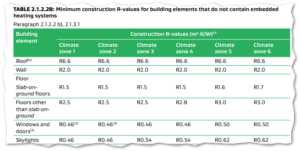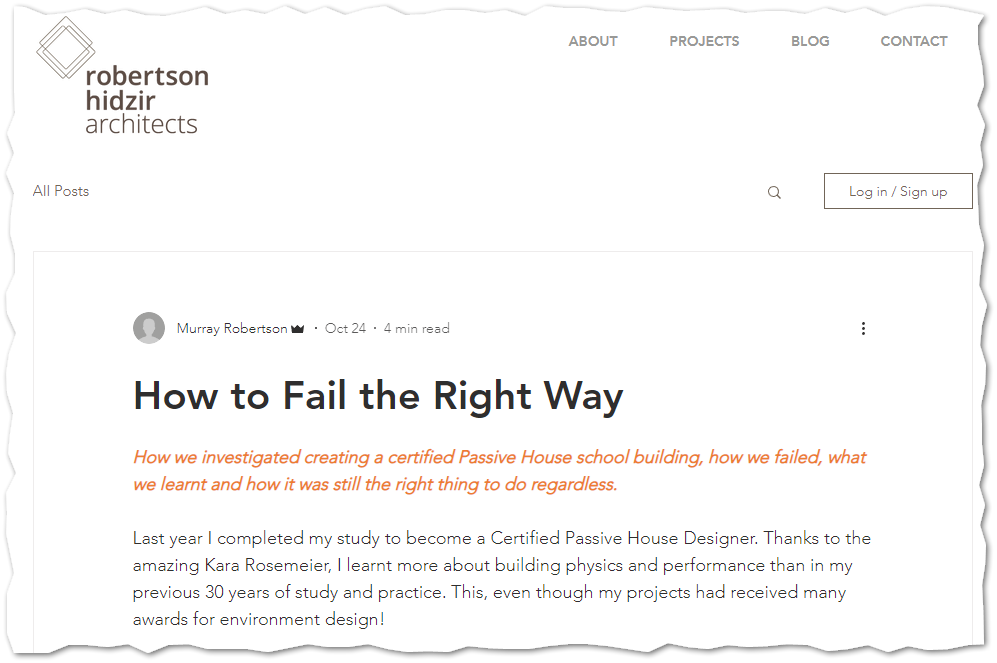Architect—and newly graduated PH designer—Murray Robertson wrote a really insightful piece about his experience designing a mass timber school building to the Passive House standard. Things were looking good: “We found for a typical mid-size school building that all that was required, apart from careful modelling and design, was better-performing windows, a relatively inexpensive airtightness layer, and a fresh air …
New thermal performance data for NZ timber window profiles

Consulting with building component manufacturers to help them make good products even better is a favourite activity for the Sustainable Engineering team. Lunds Joinery, a highly-regarded family-owned company in Timaru, approached us to do some window calculations for their standard timber profiles. Lunds incorporated the fRSI calculations and Uf data into a new publication, the LJT Timber Window Guide, which …
Energy efficiency will improve

Today we have it: the new H1 has been released. I no longer need to keep it all secret and can finally talk about the new energy efficiency requirements. Note there is a year’s lag before these come into effect (“adjustment period”). Just get on with it, I say to the heel-draggers. As MBIE says, “the changes go as far …
Airtightness results in NZ PH builds keep improving

The Leith Valley Passive House in Dunedin is New Zealand’s newest certified Passive House Plus home and can boast of an extraordinary blower door test result: 0.17 air changes per house (ACH) as measured by the final blower door test. Builder Wayne Dyet (WD Homes) is a competitive man with an amazing eye for detail and he’s determined to construct …
Gone in 60 mins

Wow. The scale of this Irish development is immense: 219 Passive House homes planned across a 26-acre site in Belfast, a £70m project . The first 12 houses released for sale sold in less than a hour. A further nine are about to be offered, completing the first release. These homes are expected to be completed mid-2022. We’ve one builder/developer …
Passive House homes make for happy families

Wonderful article from Stuff on the Sole Family Passivhaus in Christchurch. The Soles built a well-above-Code home about 10 years previously, but decided to go all the way on this, their forever home. Our case study has all the technical detail. Great to read that that the Soles are happy with their home, which “Nadia says is functioning ‘exactly how …
Passive House is totally achievable (and worth it)

This is a stand-out article from San Francisco Bay area Passive House builders, One Sky Homes. These guys are the real deal, coming to Passive House over a decade ago already having considerable experience in zero-energy, green builds. They now have a great deal of expertise in designing and building single family Passive House homes in California … and their …
Westpac get behind Raglan PH build

An in-depth Passive House case study … from a major bank? Good to see Westpac recognising the value of Passive House certification and providing finance for this Raglan project. This off-grid Passive House home is for owner/builders Toby and Catriona Tilsley and their two young kids. The Tilsleys run a sustainable building company, Craft Homes. Their new home in Raglan …
SIP build a good PH option
“How much space do you need? Do you need a TV room, a rumpus room, a dining room, and a living room? New Zealand is an amazing country: get out of your house, get in amongst it.” That’s James Clarke talking (English builder and owner of NZSIP), and as a fellow immigrant, I have to agree. First rule of “eco-homes”: …
